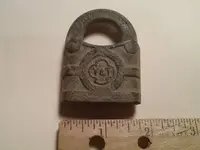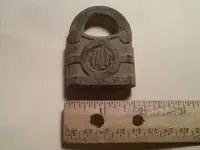lenmac65
Silver Member
- Joined
- Jul 28, 2009
- Messages
- 2,820
- Reaction score
- 9,125
- Golden Thread
- 3
- Location
- Massachusetts
- 🥇 Banner finds
- 3
- Detector(s) used
- Garrett AT Pro, Equinox 800 (as of 10/2019)
- Primary Interest:
- Metal Detecting
Found an old Yale padlock about 2 or 3 inches down in an old farm field. My first lock, which will make for a nice shed decoration. Rang up loud and clear. Stamped Yale & Towne Mfg. Co., and Stamford Conn. USA, on lock handle. I am thinking early 1900's, but I am not sure. Any ideas? Thanks for the insights. Happy Hunting.
Amazon Forum Fav 👍
Attachments
Upvote
24





